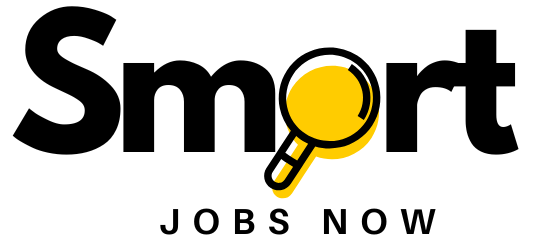Working remotely offers flexibility, but success requires intention. Understanding how to succeed in a remote job involves building a productive home office environment and maintaining a healthy work-life balance. Mastering communication tools and setting clear goals are crucial. Moreover, staying engaged with your team ensures that you don’t feel isolated in your role. Let’s explore these vital elements to thrive while working remotely.
Building a Productive Home Office
Creating a productive home office is key for anyone looking to excel in a remote job. Begin by designing a dedicated workspace. Avoid working from communal areas like dining tables or couches. Your workspace should be well-lit and equipped with all necessary tools like a reliable computer, a good-quality desk, and an ergonomic chair to support long hours of work.
Eliminate distractions by keeping your workspace clean and organized. Ensure that you have all the items you need at arm’s length, reducing the urge to leave your desk frequently. In addition, minimize noise with noise-cancelling headphones if necessary.
Pay attention to lighting and ventilation. Proper lighting is not only good for your eyes but can also enhance your mood and productivity. Natural light is ideal, but if that isn’t an option, invest in good-quality lamps. Keep the room well-ventilated to avoid feeling stuffy.
Customize your space to make it personal yet professional. Add elements that inspire you, like plants, artwork, or motivational quotes. However, ensure your background is professional enough for video calls.
Achieving an optimal home office setup will empower you to succeed in remote work, enhancing your productivity and job satisfaction.
Maintaining Work-Life Balance
Achieving a harmony between professional responsibilities and personal life is crucial when working remotely. Establishing boundaries is essential; set specific work hours and communicate these to your family or housemates to prevent overlap. Use tools like calendars and task management apps to organize work efficiently, ensuring you allocate time for relaxation and hobbies.
Crafting a routine that includes regular breaks can help maintain mental and physical health. Take short walks, stretch, or practice mindfulness during these periods. It’s important to have a dedicated, distraction-free workspace to increase focus, making it easier to switch off once work hours are over.
Moreover, establishing a clear end-of-day routine signals the transition from work to personal time. This could involve shutting down your computer, tidying your desk, or planning the next day’s tasks. Building this routine helps delineate the lines between work and rest, promoting a healthy work-life balance.
Mastering Communication Tools
Effectively using communication tools is crucial for success in a remote job. With the vast array of digital tools available, it’s essential to know how to leverage them to enhance productivity and collaboration. Start by familiarizing yourself with the messaging apps and video conferencing tools your company uses most frequently. Consistent usage of platforms like Slack, Zoom, or Microsoft Teams fosters seamless interaction with colleagues and avoids miscommunications.
Master customization features such as setting your status, using appropriate channels for different topics, and employing privacy settings to protect sensitive information. Practicing good etiquette is key; this includes being punctual to virtual meetings and keeping ongoing communication to avoid misunderstandings when working asynchronously. Remember to mute yourself during calls if you are not speaking to minimize background noise.
Additionally, exploring advanced features such as screen sharing and recording sessions can aid in clarity during presentations. Documenting important discussions helps in keeping track of the decisions made and ensures everyone is on the same page.
Explore different formats of communication
for various needs, such as quick messaging for short updates, emails for detailed reports, and video calls for complex discussions.
Finally, constantly seek feedback from your team on how communication can be improved, ensuring that all voices are heard and respected in the virtual workspace.
Setting Clear Goals and Expectations
In a remote job, setting clear goals and expectations is crucial to ensure everyone is on the same page. When goals are vague, it’s easy for confusion to arise, leading to unproductive work. Start by clearly defining the objectives of your projects. Ensure that both short-term and long-term goals are identified. Consider breaking down larger tasks into smaller, actionable steps.
Communicate these goals effectively to your team. Use tools such as project management software to keep track of progress and make adjustments as needed. Additionally, make sure expectations regarding deadlines, deliverables, and work quality are communicated clearly. This creates a transparent environment where everyone understands their roles and responsibilities.
Regular check-ins can be invaluable to discuss any challenges and reassess priorities if necessary. Adjustments may be required as projects evolve, so maintain an open line of communication to address any hurdles in meeting expectations. This not only helps in achieving set objectives but also enhances overall team productivity and morale.
Ultimately, clear goals and expectations in a remote work setup enable you to monitor progress effectively while fostering a structured yet flexible work environment.
Staying Engaged with Team Members
In the realm of remote work, maintaining a connection with your team can be challenging but crucial for success. Ensure regular check-ins with team members through video calls or chat apps to keep communication lines open.
Encourage Collaboration
through virtual brainstorming sessions and team-building activities. Share updates and provide feedback consistently to foster a sense of belonging and motivation. Utilize collaboration tools like Slack or Microsoft Teams to manage projects and track progress effectively. Scheduling informal, virtual coffee breaks can help mimic office interactions and promote a sense of community. Participate actively in team meetings and make use of digital whiteboards for shared ideas. Recognizing achievements and celebrating team wins, no matter how small, can boost morale and strengthen team bonds. Remember to listen actively and adapt flexibly to the different needs of team members, ensuring everyone feels heard and valued.
